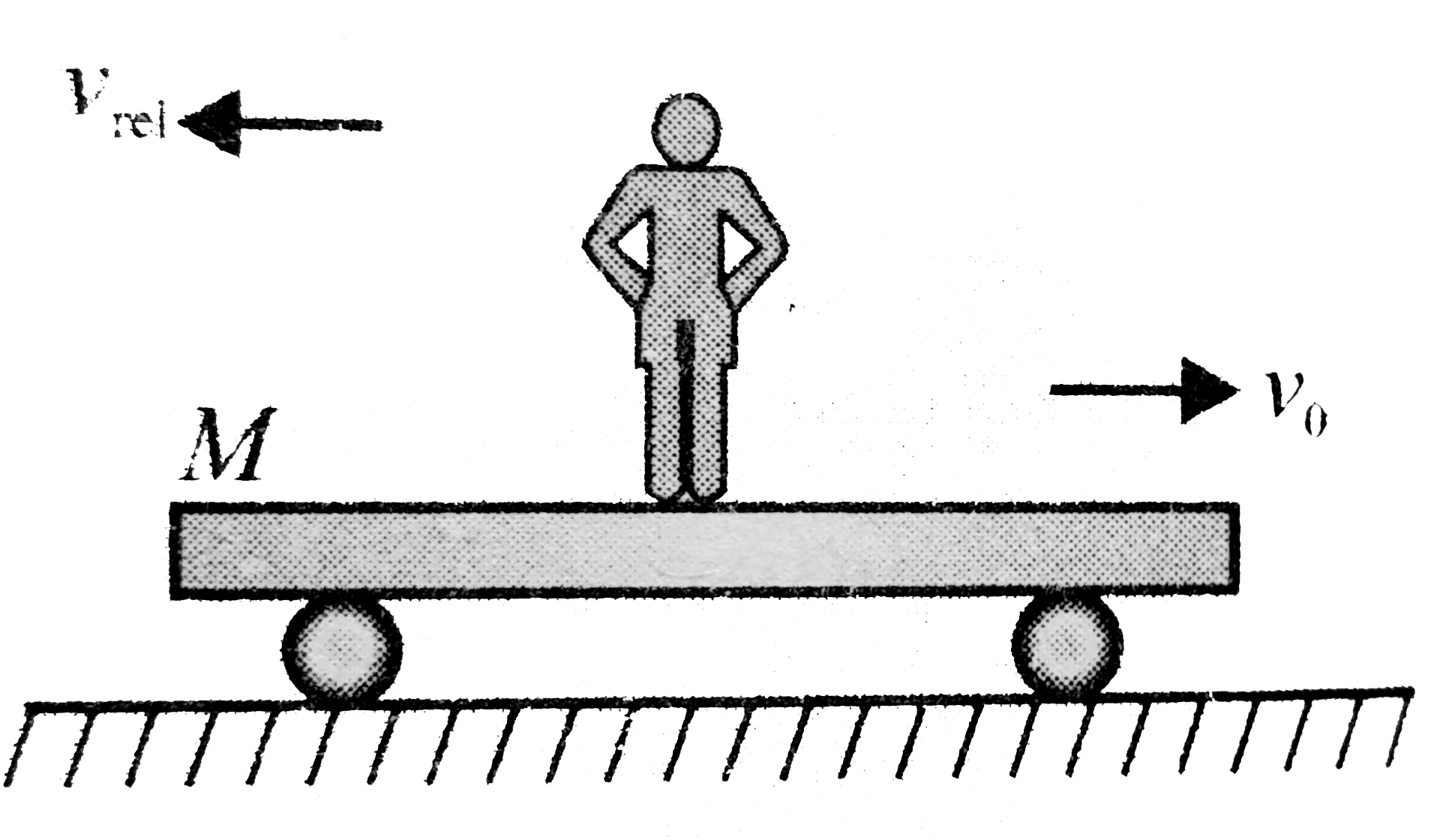a. A rail road car of mass M is moving without friction on a straight horizontal track with a velocity ct. A man of mass m lands on it normally from a helicopter. What will be the new velocity of the car? ltbgt b. If now the man begins to run on it with speed um with respect to car in a direction opposite to motion of the car, what will be the new velocity of the car?
Let v1 be the new velocity of the car. Then according to the principle of conservatioin of linear momentum
Mu=(M+m)v1
⇒v1=mM+mu…………..i
b. Let v2 be the new velocity of the car relative to the earth, then velocity of the man relative of the earth =(v2−vrel)
∴v2=v1+mvrelM+m
Topper's Solved these Questions
- CENTRE OF MASSBook:CENGAGE PHYSICSChapter:CENTRE OF MASSExercise:Exercise 1.3
Explore 24 Videos
- CENTRE OF MASSBook:CENGAGE PHYSICSChapter:CENTRE OF MASSExercise:Subjective
Explore 23 Videos
- CENTRE OF MASSBook:CENGAGE PHYSICSChapter:CENTRE OF MASSExercise:Exercise 1.1
Explore 20 Videos
- CALORIMETRYBook:CENGAGE PHYSICSChapter:CALORIMETRYExercise:Solved Example
Explore 13 Videos
- DIMENSIONS & MEASUREMENTBook:CENGAGE PHYSICSChapter:DIMENSIONS & MEASUREMENTExercise:Integer
Explore 2 Videos
Similar Questions
A railroad flatcar of mass M can roll without friction along a straight horizontal track. Initially, a man of mass 'm' is standing on the car, which is at rest. What is the velocity of the car if man runs to the left so that his speed relative to the car is vrel.
View Solutiona. A rail road flat car of mass M can roll without friction along a straight horizontal track . Initially, a man of mass m is standing on the car which is moving to the right with speed v0. What is the change in velocity of the car if the man runs to the left so that his speed relative to the car is vrel just before he jumps off at the left end?
b. If there are n men each of mass m on the car, should they all run and jump off together or should they run and jump one by one in order to give a greater velocity to the car?

View Solution
Knowledge Check
A man of mass m stands on a long flat car of mass M , moving with velocity V.If he now begins to run with velocity u, with respect to the car , in the same direction as V, the the velocity of the car will be
AV−mu/MBV−mu/(m+M)CV+mu/(m+m)DV−u(M−m)/(M+m)A boy of mass 40kg stands on a rail road car of mass 60kg, moving with velocity 10m/s. Now , the boy begins to run with velocity 5m/s , with respect to the car , in the same direction , the velocity of the car will be
A6m/sB8m/sC10m/sD12m/sA girl of mass 50 kg stands on a railroad car of mass 75 kg moving with velocity 20ms−1 . Now , the girl begins to run with a velocity of 10ms−1 with respect to the car in the same direction , as that of the car. The velocity of the car at this instant will be
A20ms−1B24ms−1C16ms−1D18ms−1
A man weighing 50 kg runs along a railway track with a velocity of 18 km/h and jumps onto a stationary car of 2 quintal standing on the rails. What would be the velocity acquered by the car ?
View SolutionA flat car of mass M with a child of mass m is moving with a velocity v1. The child jumps in the direction of motion of car with a velocity u with respect to the car. Find the final velocities of the child and that of the car after jump.
View SolutionTwo cars A and B start moving from the same point with same velocity v=5km/minute. Car A moves towards North and car B in moving towards East. What is the relative velocity of B with respect to A ?
View SolutionA car of mass m is driven with acceleration a along a straight level road against a constant external resistive force R. When the velocity of the car V, the rate at which the engine of the car is doing work will be
View SolutionA car of mass m is driven with acceleration a along a straight level road against a constant external resistive force R. When the velocity of the car V, the rate at which the engine of the car is doing work will be
View Solution